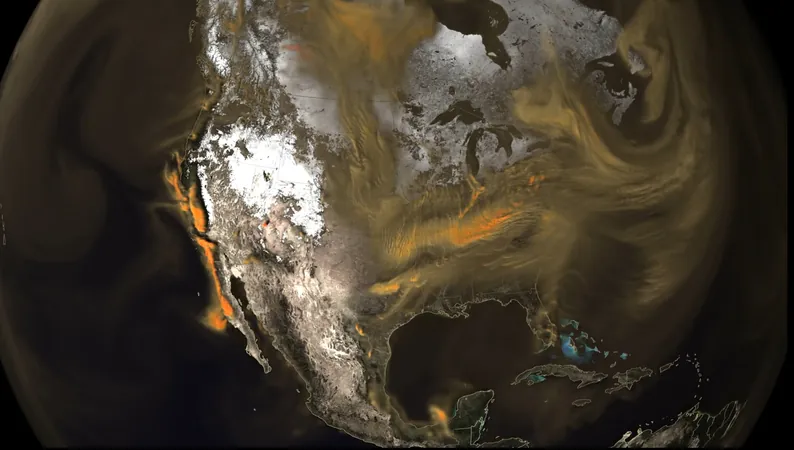
Shocking Discovery: A 'Gravity Hole' Unearthed in the Indian Ocean Linked to Ancient Ocean's Demise!
2024-11-23
Author: Arjun
Introduction
Did you know that Earth's gravitational field holds a mysterious defect? Dubbed a "gravity hole," this phenomenon is located in the depths of the Indian Ocean and is the deepest dent in our planet's gravitational landscape. In this peculiar circular area, sea levels plunge an astonishing 348 feet lower than any other location on Earth due to an unusual gravitational anomaly characterized by a remarkably weak gravitational pull.
Historical Context
Though scientists first identified this fascinating feature in 1948, the puzzle of its origins remained unsolved for decades—until now. A groundbreaking study from 2023 has unveiled an astonishing link between this gravity hole and the extinction of an ancient ocean known as Tethys, which once thrived between the supercontinents of Laurasia and Gondwana.
Details of the Study
Published in the esteemed journal *Geophysical Research Letters*, the research detailed that the gravity hole spans a staggering 3.1 million square kilometers and is situated approximately 1,200 kilometers southwest of India. To dig deeper into the mystery, researchers employed advanced simulations to track the movement of Earth's mantle and tectonic plates over the past 140 million years.
Tectonic Activity and Tethys Ocean's Demise
According to the study, the demise of the Tethys Ocean traces back 180 million years, when a significant chunk of Earth's crust sank beneath it as Gondwana began breaking apart. This tectonic upheaval caused shattered pieces of the crust to dive deeply into the mantle, leading to astonishing repercussions—including the formation of this gravity hole.
The African Blob and Its Impact
Adding another twist to this geological saga, around 20 million years ago, these fragments triggered the displacement of a high-density material linked to what's referred to as the "African blob." This colossal structure, hidden beneath Africa, stands an eye-popping 100 times taller than Mount Everest and consists of crystallized magma. As plumes of low-density magma ascended and began to replace the heavier magma, the gravity of the region weakened even further.
Need for Further Research
While these revelations are groundbreaking, scientists caution that the research requires further validation through earthquake data to confirm the existing low-density plumes underneath the gravity hole. Interestingly, it's worth noting that similar blobs could be lurking within Earth's magma, even in areas where they were never expected to appear.
Potential Implications for Mars
In a captivating twist, researchers have even identified potential geological features akin to the gravity hole beneath the surface of Mars, suggesting that what we learn from our planet's interior may shed light on the secrets of the red planet as well.
Conclusion
As scientists continue to unlock the mysteries of our planet's geological past, they might just unearth answers to some of our biggest questions about Earth's dynamics and what lies beyond our world. Is this gravity hole just the tip of the iceberg in our quest to understand Earth's inner workings? Stay tuned to find out!



 Brasil (PT)
Brasil (PT)
 Canada (EN)
Canada (EN)
 Chile (ES)
Chile (ES)
 España (ES)
España (ES)
 France (FR)
France (FR)
 Hong Kong (EN)
Hong Kong (EN)
 Italia (IT)
Italia (IT)
 日本 (JA)
日本 (JA)
 Magyarország (HU)
Magyarország (HU)
 Norge (NO)
Norge (NO)
 Polska (PL)
Polska (PL)
 Schweiz (DE)
Schweiz (DE)
 Singapore (EN)
Singapore (EN)
 Sverige (SV)
Sverige (SV)
 Suomi (FI)
Suomi (FI)
 Türkiye (TR)
Türkiye (TR)